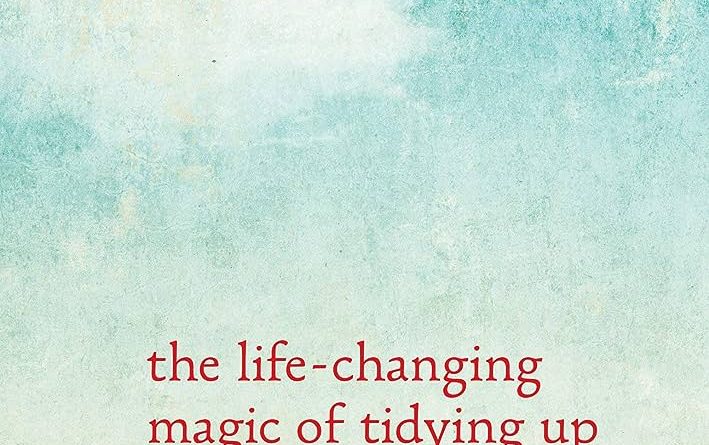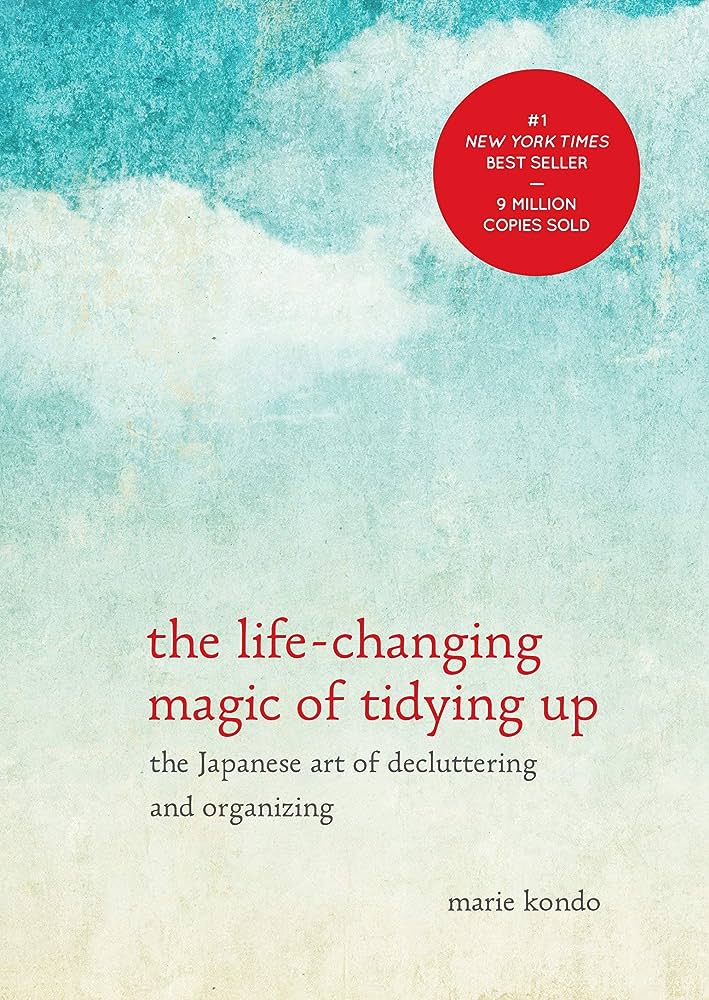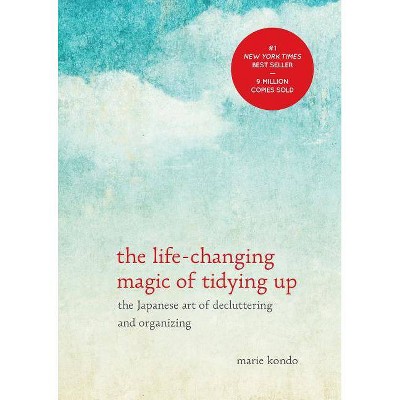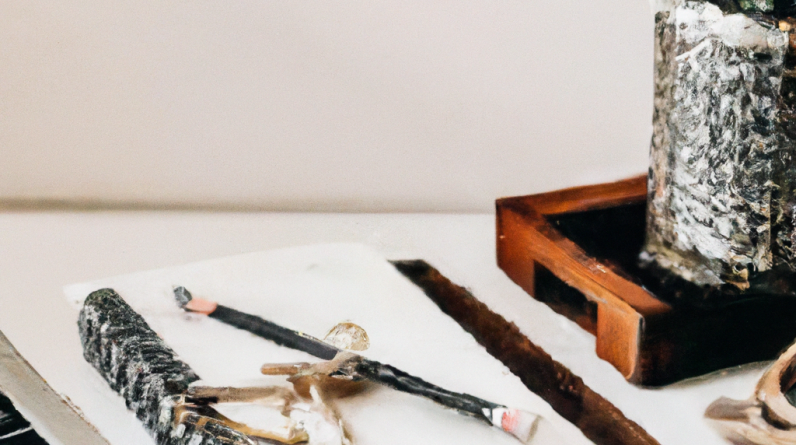
Imagine a life free from the burdens of clutter, a space where simplicity and balance reign supreme. In “The Life-Changing Magic of Decluttering: The Japanese Art of Minimalism,” you will embark on a transformative journey to discover the secrets of living a more intentional and minimalist lifestyle. Inspired by the Japanese philosophy of simplicity, this article will introduce you to practical tips and profound insights that will help you declutter your home, mind, and ultimately, your life. Get ready to experience the life-changing magic of decluttering and embrace the beauty of minimalism.

This image is property of Amazon.com.
Table of Contents
The History of Minimalism in Japan
Origins of Minimalism in Japan
Minimalism in Japan has deep roots that can be traced back to ancient times. The philosophy of simplicity and minimalism has been present in various aspects of Japanese culture, including architecture, art, and lifestyle. The origins of minimalism in Japan can be attributed to the influence of Zen Buddhism and the concept of Wabi-Sabi.
Influence of Zen Buddhism
Zen Buddhism, which originated in China and was brought to Japan in the 12th century, played a significant role in shaping the minimalist aesthetic in Japan. The teachings of Zen emphasize the importance of being present in the moment and finding beauty in simplicity. Zen gardens, with their minimalistic design and focus on creating a serene atmosphere, are a prime example of the influence of Zen Buddhism on Japanese minimalism.
Importance of Wabi-Sabi
Wabi-Sabi is another key element in the history of minimalism in Japan. It is a concept that embraces imperfection, transience, and the beauty of natural materials. Wabi-Sabi values simplicity, asymmetry, and the patina that comes with age. This aesthetic philosophy has greatly influenced Japanese art, tea ceremonies, and the overall approach to minimalist living.
Evolution of the Minimalist Movement
Over time, minimalism in Japan has evolved and adapted to the changing societal and cultural landscape. After World War II, as Japan went through a period of rapid economic growth and consumerism, there was a growing recognition of the need to simplify and declutter. The minimalist movement gained momentum in the 20th century, with artists and designers championing the principles of minimalism in their work.
The Philosophy Behind Minimalism
Embracing Simplicity
At the core of minimalism is the idea of embracing simplicity in all aspects of life. This means intentionally removing excess and focusing on what truly brings value and joy. By eliminating unnecessary physical and mental clutter, you create space for what truly matters and can lead a more intentional and fulfilling life.
Focus on Essentialism
Essentialism is a principle closely linked to minimalism. It involves identifying and focusing on the essential elements that contribute to your well-being and happiness. By prioritizing what truly matters and letting go of the rest, you create a sense of clarity and purpose in your life.
The Connection to Mindfulness
Minimalism is deeply intertwined with mindfulness, which is the practice of being fully present and aware in the present moment. Both minimalism and mindfulness encourage a conscious and intentional approach to life, allowing you to savor each experience and find joy in the simple things.
Benefits of Decluttering
One of the key benefits of embracing minimalism is the act of decluttering. When you declutter your physical and mental space, you remove distractions and create a sense of calm and order. This, in turn, can help reduce stress, increase productivity, and improve overall well-being.
The KonMari Method
Introduction to Marie Kondo
Marie Kondo, a Japanese organizing consultant, is widely known for her KonMari Method. Her approach to decluttering and organizing has gained global recognition and has become synonymous with minimalist living. Kondo’s philosophy focuses on sparking joy and creating a harmonious relationship with your belongings.
Key Principles of the KonMari Method
The KonMari Method is guided by a set of key principles. These include tidying by category, rather than by location, and asking yourself if an item sparks joy in your life. Kondo also emphasizes the importance of expressing gratitude towards your belongings, even when letting go of them.
Tidying by Category
According to the KonMari Method, it is essential to tidy by category rather than room by room. This helps you see the full extent of your belongings and make more conscious decisions about what to keep and what to let go of. The categories include clothing, books, papers, miscellaneous items, and sentimental items.
The Joy Sparking Test
A fundamental aspect of the KonMari Method is determining if an item sparks joy in your life. When decluttering, you are encouraged to hold each item and assess how it makes you feel. If it brings you joy, it is worth keeping. If it doesn’t, it is time to say goodbye and thank it for its service.
Proper Folding Techniques
In addition to decluttering, Marie Kondo’s method also emphasizes the importance of proper folding techniques. By folding and storing your clothes in a way that is visible and easily accessible, you can maintain a tidy and organized space. This technique also allows you to appreciate and care for your garments.
The Impact of Minimalism on Mental Well-being
Reducing Stress and Overwhelm
One of the significant impacts of minimalism on mental well-being is the reduction of stress and overwhelm. Living in a cluttered environment can create feelings of chaos and anxiety. By simplifying your surroundings, you create a sense of calm and make it easier to focus on what truly matters.
Creating Inner Calm and Serenity
Minimalism can also help create inner calm and serenity. By decluttering and organizing your physical space, you create a harmonious environment that promotes relaxation and peace of mind. A tranquil living space can have a profound impact on your overall well-being.
Increasing Focus and Productivity
A clutter-free environment allows you to focus more easily and be more productive. When your surroundings are free from distractions, you can concentrate on tasks at hand and accomplish them more efficiently. This enhanced focus and productivity can lead to a greater sense of fulfillment and satisfaction in your daily life.
Enhancing Emotional Well-being
Minimalism encourages the intentional evaluation and letting go of possessions that no longer serve a purpose or bring joy. This act of decluttering can have a profound effect on your emotional well-being. By releasing attachment to material possessions, you create space for emotional growth, self-reflection, and personal development.
Establishing Healthy Habits
Minimalism promotes the establishment of healthy habits in all areas of life. From adopting a more intentional approach to purchasing goods to organizing and simplifying daily routines, minimalism encourages mindful choices that support physical, mental, and emotional well-being. By embracing minimalism as a lifestyle, you take steps towards creating a sustainable and fulfilling existence.

This image is property of Amazon.com.
Decluttering Your Physical Space
Assessing Your Belongings
When decluttering your physical space, it is crucial to assess your belongings and evaluate their significance in your life. Each item should be considered individually, and you should ask yourself if it brings you joy or serves a practical purpose. This assessment helps you make informed decisions about what to keep and what to let go of.
Identifying Clutter and Excess
Clutter is a common obstacle to achieving a minimalist living space. It is important to identify clutter and excess in your surroundings. This includes items that are no longer useful, duplicates, and items that do not align with your values or goals. By recognizing clutter, you can begin the process of decluttering and creating a more intentional living space.
Organizing and Simplifying
Organizing and simplifying your physical space is an essential part of embracing minimalism. This involves finding a designated place for each item and ensuring that everything has a purpose and is easily accessible. Utilizing storage solutions such as bins, baskets, and shelving can help create a more organized and streamlined environment.
Letting Go of Sentimental Items
One of the challenges of decluttering is letting go of sentimental items. Sentimental items can hold deep emotional value, but they can also contribute to clutter and make it difficult to maintain a minimalist lifestyle. Marie Kondo’s KonMari Method encourages expressing gratitude towards sentimental items before letting them go, helping to ease the emotional attachment.
Creating Functional and Inspiring Spaces
Minimalism is not just about getting rid of stuff; it is also about creating functional and inspiring spaces. By carefully curating your possessions and arranging them in a deliberate manner, you can create a living environment that reflects your values and brings you joy. This intentional approach to designing your space can enhance your overall well-being.
Decluttering Your Digital Space
Managing Digital Files and Documents
In today’s digital age, decluttering your digital space is just as important as decluttering your physical space. Managing digital files and documents involves organizing them in a systematic manner, deleting unnecessary files, and backing up important information. This helps prevent digital clutter and promotes a more streamlined and efficient digital experience.
Organizing Email and Social Media
The constant influx of emails and notifications from social media can contribute to digital overwhelm. Organizing your email and social media accounts can help minimize distractions and increase productivity. This can be achieved by unsubscribing from unnecessary newsletters, organizing emails into folders, and setting boundaries for social media usage.
Unsubscribing and Reducing Digital Clutter
Unsubscribing from irrelevant email lists and regularly cleaning out your inbox are effective ways to reduce digital clutter. By keeping your digital space tidy and free from unnecessary emails, you create a more focused and productive digital environment. Additionally, deleting unused apps and organizing digital files can further contribute to a minimalist digital space.
Creating Digital Minimalism Habits
Incorporating digital minimalism habits into your daily routine is key to maintaining a clutter-free digital experience. This involves setting boundaries for technology usage, practicing digital detoxes, and being mindful of the impact of digital distractions on your overall well-being. By adopting these habits, you can foster a healthier relationship with technology and promote a more intentional digital lifestyle.
Finding Balance in the Digital World
In today’s hyperconnected world, finding balance in the digital sphere is essential for overall well-being. Incorporating mindfulness practices, setting digital boundaries, and prioritizing offline experiences can help create a sense of balance and prevent digital overwhelm. Striking a healthy equilibrium between the digital and physical worlds is crucial to living a fulfilling and intentional life.
This image is property of target.scene7.com.
Minimalism and Sustainable Living
Reducing Consumption and Waste
Minimalism is closely aligned with sustainable living as it encourages reducing consumption and waste. By embracing minimalism, you become more conscious of your purchasing habits and prioritize quality over quantity. This reduces the demand for excess goods, leading to a more sustainable and environmentally-friendly lifestyle.
Embracing Mindful Consumerism
Mindful consumerism is an essential part of minimalism. It involves making deliberate and informed decisions about what you consume and being conscious of the impact your choices have on the environment and society. By choosing ethically-produced and sustainable products, you can contribute to a more mindful and responsible consumer culture.
Choosing Quality over Quantity
Minimalism emphasizes the importance of choosing quality over quantity. By investing in well-made, durable items, you reduce the need for constant replacement and lessen the environmental impact of disposable goods. This approach promotes conscious consumption and a more sustainable lifestyle.
Sustainable Decluttering and Disposal
When decluttering, it is essential to consider the environmental impact of disposing of unwanted items. Sustainable decluttering involves finding responsible solutions for discarding or repurposing items. This can include donating to charities, selling second-hand goods, or participating in community-based recycling programs. By minimizing waste during the decluttering process, you contribute to a greener planet.
Contributing to a Greener Planet
Embracing minimalism and sustainable living is a powerful way to contribute to a greener planet. By adopting a lifestyle that prioritizes simplicity, conscious consumption, and waste reduction, you become an active participant in the global effort to address environmental issues. In this way, minimalism becomes not only a personal philosophy but also a conscious choice towards creating a more sustainable future.
Overcoming Obstacles to Minimalism
Attachment to Material Possessions
One of the biggest obstacles to minimalism is the attachment to material possessions. Overcoming this attachment involves shifting focus towards experiences and relationships rather than accumulating belongings. By questioning the true value of material possessions and understanding that they do not define your worth, you can begin to cultivate a more minimalist mindset.
Dealing with Emotional Resistance
Minimalism often involves making tough decisions about letting go of items that hold sentimental value or represent a part of your identity. Dealing with emotional resistance requires self-reflection and acknowledging that memories and emotions are not housed in physical objects. By shifting your perspective and focusing on the present moment, you can overcome emotional resistance and embrace a more minimalist lifestyle.
Managing Impulse Buying
Impulse buying is a common roadblock to minimalism. Overcoming this habit involves practicing mindfulness and intentional decision-making when it comes to purchases. By implementing a waiting period before making non-essential purchases, you allow time for reflection and consideration, reducing the likelihood of impulsive decisions and unnecessary clutter.
Finding Support and Accountability
Seeking support and accountability from like-minded individuals can greatly aid in the transition to minimalism. This can include joining online communities or local minimalist groups, where you can share experiences, seek guidance, and find inspiration. Having a supportive network can help you stay motivated and navigate the challenges that may arise on your minimalist journey.
Developing a Long-Term Minimalist Mindset
Developing a long-term minimalist mindset is crucial to sustaining a minimalist lifestyle. It involves adopting a flexible and adaptable approach to minimalism that evolves as your needs and values change over time. By continuously reflecting on your goals, priorities, and values, you can ensure that minimalism remains a guiding principle in your life.

This image is property of bookcoffeehappy.files.wordpress.com.
Minimalism as a Lifestyle Choice
Minimalist Home Design and Decor
Minimalist home design and decor focus on clean lines, simplicity, and functionality. It involves decluttering and organizing your living space to create a serene and harmonious environment. Minimalist design principles emphasize the use of neutral colors, natural materials, and purposeful furniture arrangements to promote a sense of calm and tranquility.
Capsule Wardrobe and Minimalist Fashion
A capsule wardrobe is a collection of essential clothing items that can be mixed and matched to create a variety of outfits. Embracing a minimalist approach to fashion involves curating a wardrobe that consists of high-quality, versatile pieces that align with your personal style. This simplifies decision-making, reduces wardrobe clutter, and promotes a more sustainable approach to fashion.
Minimizing Digital Distractions
Minimizing digital distractions is an essential component of minimalist living in the digital age. It involves setting boundaries for technology usage, streamlining digital workflows, and adopting intentional practices that reduce digital overwhelm. By minimizing distractions, you create space for more meaningful and focused experiences in both the digital and physical realms.
Embracing Simple and Intentional Living
Minimalism extends beyond physical possessions and encompasses all aspects of life. Embracing simple and intentional living means prioritizing experiences, relationships, and personal growth over material possessions. It involves aligning your actions and choices with your values and consciously shaping your life to reflect what truly brings you joy and fulfillment.
Adopting Minimalism in Various Areas of Life
Minimalism can be adopted in various areas of life, including finances, relationships, and time management. By applying minimalist principles to these areas, you can simplify and declutter not only your physical space but also your mental and emotional well-being. This holistic approach to minimalism allows you to cultivate a more intentional and fulfilling life overall.
The Global Influence of Japanese Minimalism
Growth of Minimalism Movement Worldwide
The influence of Japanese minimalism has transcended borders, leading to the growth of the minimalism movement worldwide. As people seek more intentional and sustainable lifestyles, they turn to the principles of minimalism for guidance. Minimalism has gained popularity through books, documentaries, and online content, inspiring individuals from different cultures to embrace a simpler way of life.
Incorporating Minimalism in Different Cultures
While minimalism originated in Japan, it has been embraced and incorporated into different cultures around the world. Each culture adds its unique perspective to minimalism, adapting the principles to suit its specific needs and values. This incorporation of minimalism into diverse cultures highlights its universal relevance and its ability to inspire individuals regardless of their background.
Adapting Japanese Minimalist Principles
Japanese minimalist principles have been adapted and implemented in various fields, including design, architecture, and lifestyle. The concepts of simplicity, harmony, and functionality continue to influence aesthetics and creative expressions globally. By adapting these principles to their own context, individuals and communities incorporate the essence of Japanese minimalism while infusing their unique cultural influences.
Promoting Sustainable and Conscious Living
Japanese minimalism has played a significant role in promoting sustainable and conscious living worldwide. By encouraging reduced consumption, mindful consumerism, and waste reduction, minimalism aligns with the values of environmental stewardship and social responsibility. The global minimalism movement has contributed to raising awareness about the impact of consumer culture on the planet and inspiring individuals to make positive changes in their lives.
Inspiring a Shift in Consumerism
As the influence of Japanese minimalism continues to spread, it has inspired a shift in consumerism. More individuals are questioning the need for excess belongings and reevaluating their purchasing habits. People are seeking alternatives to the constant cycle of buying and disposing, and are prioritizing experiences, quality, and sustainability. This shift in consumerism reflects an increasing desire for a more mindful and intentional approach to living.
In conclusion, the history of minimalism in Japan is rooted in ancient concepts such as Zen Buddhism and Wabi-Sabi. The philosophy behind minimalism is centered around embracing simplicity, focusing on essentialism, and cultivating mindfulness. The KonMari Method, developed by Marie Kondo, provides practical techniques for decluttering and organizing. Minimalism has a profound impact on mental well-being, helping to reduce stress, create inner calm, increase focus, and enhance emotional well-being. Decluttering both physical and digital spaces is key to achieving a minimalist lifestyle. Minimalism is also closely linked to sustainable living, promoting reduced consumption, mindful consumerism, and a greener planet. Overcoming obstacles such as attachment to material possessions and managing impulse buying is essential to fully embrace minimalism. Minimalism can be adopted as a lifestyle choice in various aspects of life, including home design, fashion, and time management. The global influence of Japanese minimalism has led to the growth of the minimalism movement worldwide, promoting conscious and sustainable living. By incorporating Japanese minimalist principles, individuals and communities can create a more intentional and fulfilling life.

This image is property of covers.audiobooks.com.








